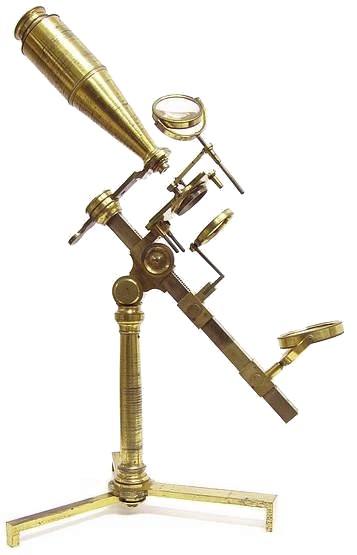
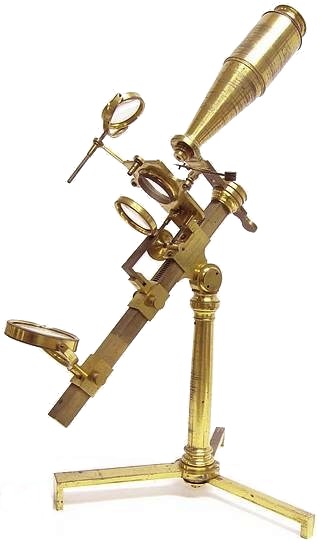
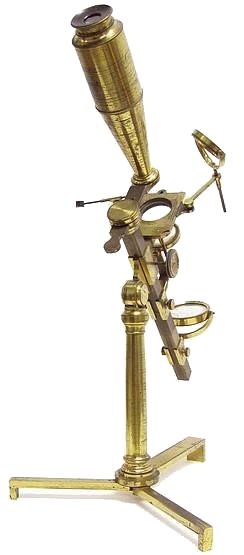
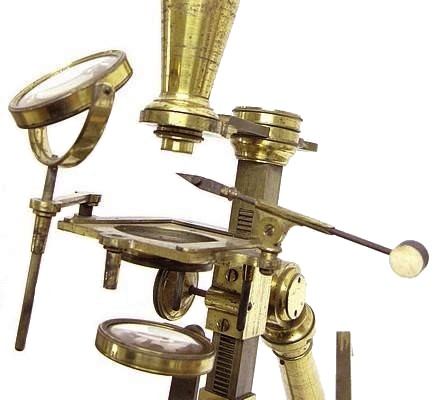
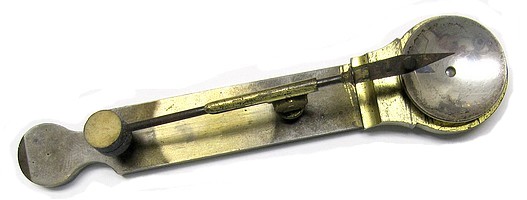
The limb can be removed and converted to a compass microscope using either of the three Lieberkuhn objectives and the stage forceps.
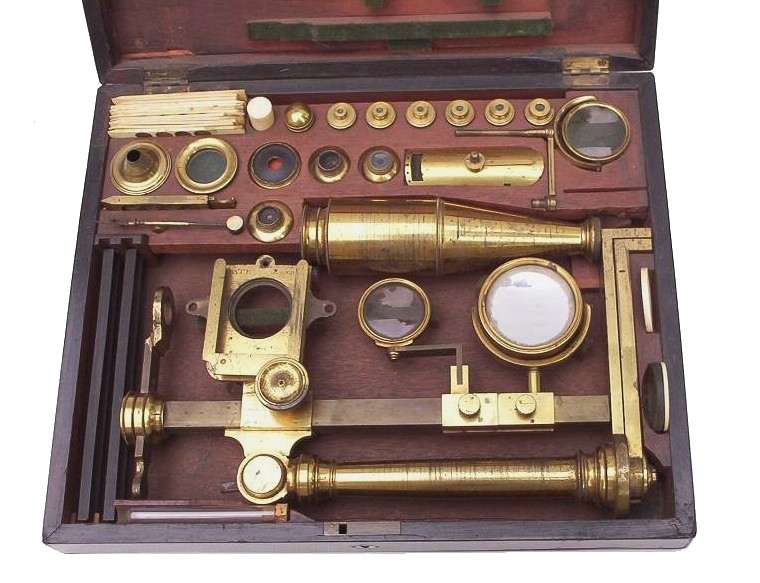
The accessories supplied with this microscope include six numbered objectives, a higher power objective, three objectives with a Lieberkuhn, a sub-stage light cone, a live-box, a brass wet slide, a stage mounting condenser, a fish-plate, a stage forceps, a glass tube for live objects, a selection of ivory slides with each having multiple specimens, a group of four large wood slides with opaque objects, a ivory talc box, and some ivory and glass stage inserts. The microscope has a sub-stage condenser on a sliding arm.
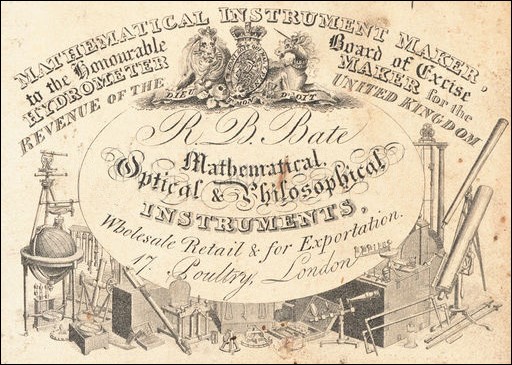
Trade card of Robert Brettell Bate (1782-1847)
The microscope now known as the "Most Improved" model has its origin in the "Universal Compound Microscope" introduced by George Adams Jr. in the late 18th century and described in his 1787 publication, Essays on the Microscope. By the end of the century, the copyright to Adams' books and designs were purchased by the firm W. & S. Jones of London. They began, in 1798, the production of a microscope with a similar design, which they called the "Jones Most Improved Microscope". A folding tripod base from which rises a pillar terminating in a compass joint for inclination characterizes this design. Attached to the other end of the joint is a bar that holds the tube, stage, mirror, and sometimes a simple lens to serve as a condenser. The focusing mechanism consists of a rack embedded in the bar and pinion attached to the stage; this arrangement moves the stage in and out of focus. The mirror can also be positioned on the bar by sliding it up and down. The optics in this model usually consist of a double eye-lens and a field lens located within the body of the tube; the objectives are non-achromatic. This design became very popular and was produced by many other English opticians during the first part of the 19th century.
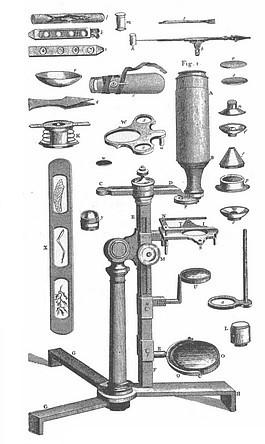
Elsewhere on this website are examples of a small Jones Most Improved and a Jones Improved microscope by Bate.
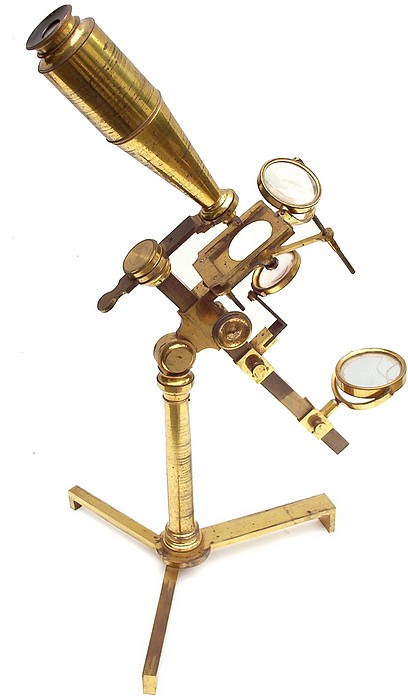
Home-Antique Microscopes Site Index
email: wissnera@verizon.net